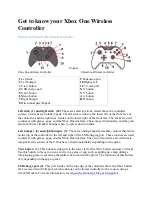
Bronkhorst®
Instruction Manual mini CORI-FLOW ML120
9.17.097G
26
3.4.4
Baud rate, node address and parity
mini CORI-FLOW ML120
Series instruments are configured ex factory. If there is a need of changing any of the specified
RS485 settings, see the tables below for the supported configurations. The default selections are printed in boldface.
Interface/medium:
RS485
Protocol:
FLOW-BUS
Modbus RTU
Modbus ASCII
Baud rate:
187500
400000
9600
19200
38400
56000
57600
115200
128000
256000
9600
19200
38400
56000
57600
115200
128000
256000
Node address:
3…125
1…247
1…247
Parity:
None
None; Even; Odd
None; Even; Odd
Changing RS485 settings of the RJ-45 top connector interface
In case the FLOW-BUS or Modbus RJ-45 fieldbus connector is used for bus
communication, the node address can be easily set by using the rotary switches on
the side of the instrument. Use the ‘MSD’ (Most Significant Digit) to set the ‘tens’ of
the bus-address and the ‘LSD’ (least Significant Digit) to set the ‘unit’ of the bus-
address (the example on the right reads ‘63’). Set the rotary switches to '00' for
automatic installation. Refer to the corresponding fieldbus manual,
document
9.17.024
(FLOW-BUS) or document 9.17.035 (Modbus) for more details.
For changing the baud rate or parity settings use the RS232 interface to change the
corresponding parameters. See
Digital parameters - Network configuration
for
changing parameters.
Changing RS485 settings of the 9-pin D-sub side connector interface
In case the 9-pin D-sub side connector is set for RS485 communication, the baud rate or node address can be changed by
using the micro switch or by changing the settings in the ‘Configuration Mode’. Refer to section
changing node address and baud rate with the micro switch.
Other communication parameters can be changed only in configuration mode. See
configuration mode. In configuration mode, bus type and baud rate are set to RS232 (FLOW-BUS/ProPar) and 38400 baud
respectively. Change the appropriate parameters as described in
Digital parameters - Network configuration
. When finished,
deactivate configuration mode using the same procedure.
Changes made to the network settings will
not
be restored by a factory reset.
















































